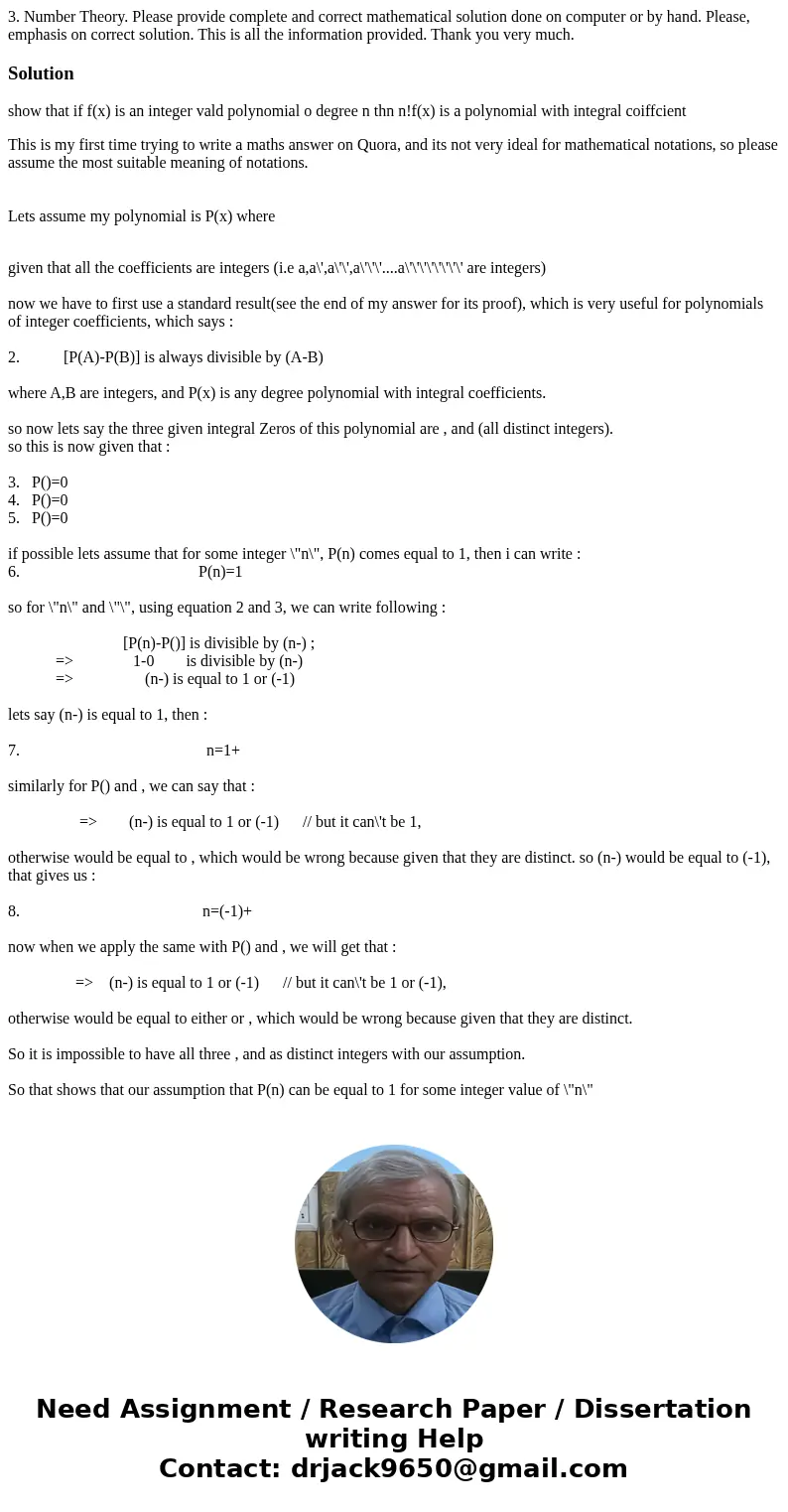3 Number Theory Please provide complete and correct mathemat
3. Number Theory. Please provide complete and correct mathematical solution done on computer or by hand. Please, emphasis on correct solution. This is all the information provided. Thank you very much.
Solution
show that if f(x) is an integer vald polynomial o degree n thn n!f(x) is a polynomial with integral coiffcient
This is my first time trying to write a maths answer on Quora, and its not very ideal for mathematical notations, so please assume the most suitable meaning of notations.
Lets assume my polynomial is P(x) where
given that all the coefficients are integers (i.e a,a\',a\'\',a\'\'\'....a\'\'\'\'\'\'\'\' are integers)
now we have to first use a standard result(see the end of my answer for its proof), which is very useful for polynomials of integer coefficients, which says :
2. [P(A)-P(B)] is always divisible by (A-B)
where A,B are integers, and P(x) is any degree polynomial with integral coefficients.
so now lets say the three given integral Zeros of this polynomial are , and (all distinct integers).
so this is now given that :
3. P()=0
4. P()=0
5. P()=0
if possible lets assume that for some integer \"n\", P(n) comes equal to 1, then i can write :
6. P(n)=1
so for \"n\" and \"\", using equation 2 and 3, we can write following :
[P(n)-P()] is divisible by (n-) ;
=> 1-0 is divisible by (n-)
=> (n-) is equal to 1 or (-1)
lets say (n-) is equal to 1, then :
7. n=1+
similarly for P() and , we can say that :
=> (n-) is equal to 1 or (-1) // but it can\'t be 1,
otherwise would be equal to , which would be wrong because given that they are distinct. so (n-) would be equal to (-1), that gives us :
8. n=(-1)+
now when we apply the same with P() and , we will get that :
=> (n-) is equal to 1 or (-1) // but it can\'t be 1 or (-1),
otherwise would be equal to either or , which would be wrong because given that they are distinct.
So it is impossible to have all three , and as distinct integers with our assumption.
So that shows that our assumption that P(n) can be equal to 1 for some integer value of \"n\"

 Homework Sourse
Homework Sourse